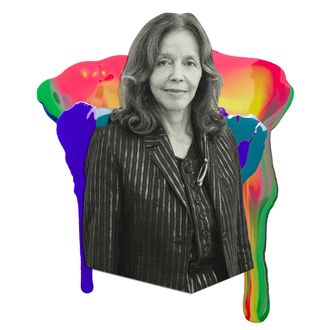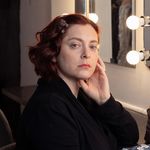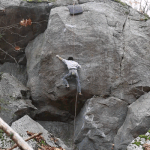
Gallerist Rachel Lehmann is a citizen of the world. Born in Ethiopia (in what is now Eritrea), raised in Germany, and educated in Switzerland, she has found profound inspiration in each of these places. The natural environment of Asmara gave her an eye for light and color from a young age. Living in postwar Frankfurt, she got to watch artists’ careers form in real time. And Geneva, where she opened her first gallery, gave her a foothold in the art world. Then, in 1996, she and David Maupin established Lehmann Maupin in Soho. The gallery has since expanded to Seoul and London, with an office in Hong Kong and nearly 60 staff worldwide.
Lehmann is interested in art that crosses borders and disciplines, and has gained recognition for introducing artists to new parts of the world. Early in her career, this meant bringing artists like David Salle and Jeff Koons to European markets. Later on, Lehmann Maupin was the first gallery to show Catherine Opie, Marilyn Minter, and Nari Ward in Asia. The gallery will celebrate a slew of firsts next year, too, including Korean artist Sung Neung Kyung’s first solo exhibition outside of South Korea. When I spoke with Lehmann, she had just returned from a visit to China, where she sensed a renewed artistic energy; she feels a closeness to the region through the artists that she represents, including Liu Wei, and the gallery she opened in Hong Kong in 2013.
This month, at Art Basel Miami Beach, Lehmann Maupin will exhibit a mix of paintings, sculptures, photography, and installations, with new works by Lee Bul, Do Ho Suh, and Erwin Wurm. It will also celebrate a new solo exhibition by Hernan Bas, whom the gallery has represented since 2009, at the Bass Museum of Art. While Lehmann’s career takes her all over the world, some things remain the same no matter where she goes: black tea in the morning, a good book to help her wind down from the day. She lives in New York with her husband (though she has also found a home in many an airport) and has two grown daughters. Here’s how she gets it done.
On her morning routine:
Depending on jet lag, I usually wake up around six o’clock and have tons of English breakfast tea, very black and very, very dark. I have a normal breakfast— fruit and toast and yogurt — and then I do something so I can sweat for at least half an hour so I can decompress. Very often, if I’m running outdoors, I get a good idea. I live in Soho, and I go down to run along the river. It’s not the countryside, but it’s a piece of country.
On a typical day:
I either open the day or finish the day with a call to Asia. I check in with my teams in Seoul, mainland China, and Hong Kong. Mid-morning, I’ll check in with my teams in London and Europe. Most days will start with Zoom meetings and physical meetings around 9:30 a.m. We try to make it work for high-level team members, who are in different geographies. We have sales-related meetings, curatorial visits, artist meetings. Depending on the day, we are very front-loaded. Fridays are a bit quieter and that is when we get to do artist’s visits. We work basically every single day of the week.
On unwinding at the end of the day:
I’ll have a quiet glass of wine. Living in Geneva, I’ve had the pleasure — the guilty pleasure — of tasting many wines. There is this very small vineyard in the French Pyrenees called Matassa. It’s a biodynamic wine, what they call an orange wine, and I love it. I think my taste might be as adventurous in wine as it is (hopefully still) in art.
I’ll also read and watch documentaries. I just started a book called Hangman, by Maya Binyam, and I also started a book that goes historically into Korea following the war with Japan. I usually read more than one book at once. Basically, I try to do something I do not do during the day. I try to wind down at least an hour before I go to sleep because, if not, I’ll be excited the whole night.
On her introduction to the art world:
I’m from the first generation of people who lived through the Second World War, and when I was in high school in Germany, many educators didn’t speak about very recent events. I was lucky because I had a young female history teacher who decided to take us to artists’ studios. I remember her taking us to Düsseldorf to visit the studios of Konrad Lueg and Manfred Kuttner. (Interestingly, later in my life, I met Lueg, who started the famous Konrad Fischer Galerie. He was an inspiration.) My teacher said that horrible things had happened, that it had left a cultural void in Germany, but that maybe this was a new renaissance period in the country. There was a need to create something because many intellectuals were gone. So I got to see artists in their making.
At the time, I was already speaking Italian; my mother language, German; and English, which we learned in school. I went to the University of Fribourg on the border of French-speaking and German-speaking Switzerland, where I thought I would study art. My father convinced me to work in the art world during the summers instead. The idea of studying art was rather unusual. I went into political science and economics. However, I did work in different galleries, including Gallery Montenay in Paris, Sonnabend in New York, and Eric Franck in Geneva.
On whether she feels she’s “made it” professionally:
I never feel that way. To me, if you have this attitude, you’re not flexible. We’re living in very, very challenging times, geopolitically and economically. If you don’t remain adaptable, it doesn’t work.
However, there were moments … for example, an artist who joined us 23 years ago is going to have a major retrospective in all the big museums in 2025. (It hasn’t been announced yet). Or when Cecilia Vicuña was at the Guggenheim and the Tate Modern and won the Golden Lion at the Venice Biennale. That was definitely a moment when I realized how relevant we were in our position to be able to partner with and to recognize an artist like her.
On balancing parenting and work:
I have to say, and I’ll be very straightforward, that my career took priority. I don’t regret it. I really had no other choice for myself than to make it as a woman. There was little place for people like myself. I remember traveling somewhere and very clearly explaining to my 3-and-a-half year-old daughter at the time that I loved her very much, however, I had another life that I had to respect. Travel is a big component of the art world. If you own a business, like a contemporary art gallery, even if you’re based primarily in New York, you need to be on the road. I think it’s very challenging for children to see their parents less.
When my daughters were small, we were in Geneva. It’s a small town. There was no traffic. You chose the school you wanted to put your children in. It was very different than later on in New York, where they were taking the school bus at 6:15 a.m. to go to the other side of the city. I don’t know how women make it today in big cities like New York with small children.
On managing stress:
The art world can be a very competitive place. Actually, when times get tougher, like now, there’s more camaraderie. People open up and complain together. What makes it very stressful is the need to satisfy different voices. If you work with living artists, which we do, you have to be present. It’s a personal business, meaning that you cannot predict the nature of the encounter you’re going to have. It’s a psychological, emotional, and physical experience.
On what makes a good artist:
I don’t think this work is for everyone. Somebody asked me what makes a good artist, and I answered that, actually, an artist can only be an artist. They have no other choice. During COVID, we had a little bit of time to ask ourselves: What would we do if we were born again? And I would do probably the same thing all over again. You just need to accept yourself.
On the advice she wishes she had at the start of her career:
Perseverance — and to remain open to new ideas, new technologies, new voices. I just came back from China, where I visited a museum in Nanjing. It had an exhibition curated by Joachim Pissarro. It’s a beautiful exhibition, taking the idea of beauty and communication of flowers throughout history. There, I saw a Jeff Koons hummingbird, a beautiful work made of wood that was exhibited in my first gallery in Switzerland in 1991. Koons works in editions, and I produced edition No. 3 of the piece. And here was the edition exhibited in my gallery in Switzerland. What I’m trying to say is that it took a long time! Perseverance. But also, the eye that I had at the time, identifying in ’86 somebody like Jeff Koons … I was taking risks that maybe I wouldn’t take today. Bringing in younger voices and seeing what younger people consider relevant today is super-important.
On the people who help her get it done:
I’ve learned to listen to my team sometimes more than I listen to myself. Knowing that I’ve had fantastic team members around me for so many years is an achievement. I also have personal friends that I get to call off and on. I’ll definitely make time once a week, on a Sunday or a Saturday, to see a friend. I think that is invaluable.
This interview has been edited and condensed for length and clarity.




